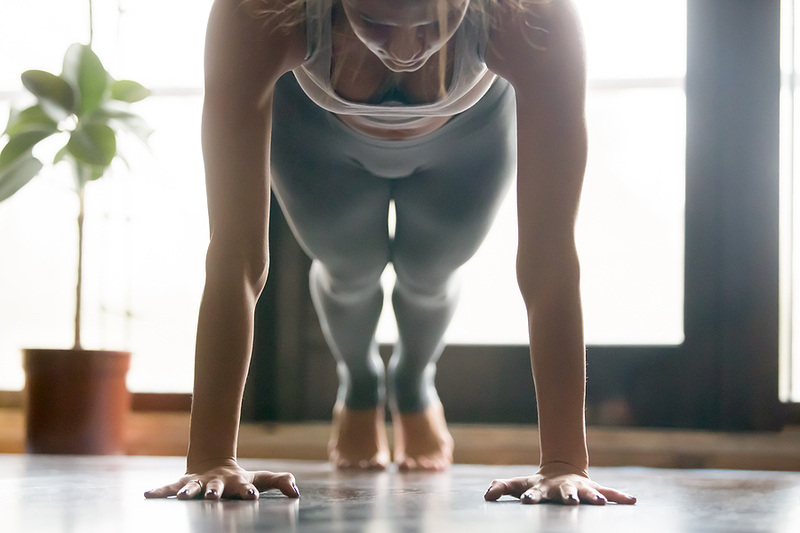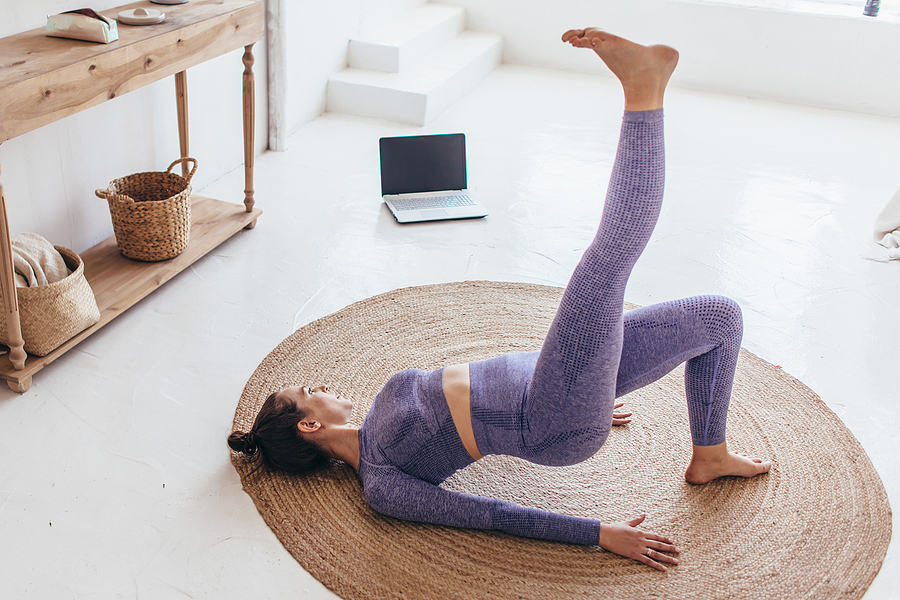
Not everyone has the luxury of a well-equipped gym, especially on a tight schedule. Whether you’re stuck working late, travelling, or just want to cut the commute, there are times when training from home is the most realistic option. But skipping the gym doesn’t have to mean compromising your progress. With a well-structured bodyweight routine, you can still hit every major muscle group and keep pushing forward.
This article breaks down why bodyweight training deserves a place in your programme, then gives you a 30-minute, no-equipment workout designed to challenge strength, mobility, and control—no matter where you train.
Why Bodyweight Training Still Builds Real Strength
Bodyweight training often gets dismissed as a warm-up, a recovery method, or something for beginners. That’s a mistake.
When programmed intelligently, bodyweight training develops real-world strength. Movements like push-ups, split squats, and isometric holds don’t just target muscles—they teach body control, improve mobility, and increase stability. The resistance isn’t absent—it’s you. And manipulating leverage, tempo, and time under tension can make even simple movements brutal in the right context.
Other benefits include:
- Zero equipment needed – You don’t need anything but space and intent. That makes it highly consistent and hard to skip.
- Improved movement quality – With fewer distractions, bodyweight training demands focus on form and control.
- Joint-friendly options – You can build strength without loading the spine or using heavy compressive forces.
- Progressive potential – Tempo, range, one-sided variations, and positional difficulty all let you scale up without needing heavier weight.
This isn’t a backup plan—it’s a training method in its own right.
The 30-Minute Bodyweight Workout
This session targets all the essential movement patterns—push, pull, squat, hinge, and core—using just your bodyweight. No equipment, no excuses.
Format:
- 5 exercises
- 45 seconds work, 15 seconds rest
- Repeat the full circuit 3–4 times
- Rest 60–90 seconds between rounds
-
Feet-Elevated Push-Up

Movement pattern: Push
Target: Chest, shoulders, triceps, core
Why it’s included: Elevating your feet shifts more load to your upper body, mimicking the top portion of a decline bench press. It also forces core engagement to maintain a rigid line from shoulders to ankles.
Form tips:
- Place feet on a stable chair or sofa
- Hands slightly wider than shoulder-width
- Lower slowly with control, elbows tracking at ~45°
- Avoid sagging hips—engage your glutes and brace your abs
Progressions:
- Easier: Regular push-up or incline push-up (hands elevated)
- Harder: Tempo push-ups (3-second lowering), push-up to pike press, or pseudo planche push-ups
-
Bulgarian Split Squat (Rear Foot Elevated)
Movement pattern: Squat
Target: Quads, glutes, hamstrings, core stabilisers
Why it’s included: This is one of the most effective unilateral lower-body exercises, offering strength and balance development without compressing the spine. Elevating the rear foot increases the range of motion and challenge.
Form tips:
- Place rear foot on a sofa, chair, or bench
- Front foot should be far enough forward to allow a vertical shin at the bottom
- Lower until your back knee nearly touches the floor
- Stay upright—don’t lean forward or twist
Progressions:
- Easier: Stationary lunge with both feet on the floor
- Harder: Add a slow eccentric (3–4 seconds down), jump at the top, or perform hands-free for extra core demand
-
Inverted Table Rows
Movement pattern: Pull
Target: Upper back, lats, rear delts, biceps
Why it’s included: Pulling movements are often neglected in home routines. If you have access to a sturdy table, this gives you horizontal pulling without needing a pull-up bar.
Form tips:
- Lie under a solid table, grip the edge
- Keep your body straight—don’t sag through the hips
- Pull your chest to the table edge, squeeze your shoulder blades together
- Lower with control
Progressions:
- Easier: Bend knees to reduce load
- Harder: Elevate feet on a stool or hold at the top before lowering
- Alternative: Use a towel in a doorway for rows if a table isn’t available
-
Single-Leg Glute Bridge (Feet on Floor or Elevated)

Movement pattern: Hinge
Target: Glutes, hamstrings, posterior chain
Why it’s included: A pure hinge movement that works the glutes and hamstrings while protecting the lower back. Single-leg work also improves hip stability and coordination.
Form tips:
- Lie on your back, one foot flat on the floor, other leg extended
- Drive through the grounded heel to lift hips, squeezing glutes at the top
- Don’t overextend your back—ribs and hips should stay aligned
- Control the descent
Progressions:
- Easier: Two-leg glute bridge
- Harder: Elevate foot on a chair, pause at the top, or add a band around your knees for lateral tension
-
Hollow Body Hold
Movement pattern: Core stability
Target: Deep core, hip flexors, spinal stabilisers
Why it’s included: This static hold is brutally effective for building true core control, which supports every other movement—especially under fatigue.
Form tips:
- Lie flat, arms extended overhead, legs straight and hovering a few inches off the ground
- Press your lower back firmly into the floor
- Keep everything tight—no arching or flaring ribs
- Hold for time or perform in short bursts (e.g. 3 x 15 sec holds with 5 sec rest)
Progressions:
- Easier: Bend knees or bring arms by your sides
- Harder: Extend legs and arms fully and hold for longer sets
Wrapping Up
Training at home doesn’t mean coasting. With the right structure, bodyweight exercises can challenge strength, endurance, and control just as much as the gym—sometimes more. This 30-minute session gives you everything you need to maintain (or build) total-body strength with zero kit.
Stick with the routine 3–4 days a week, focus on controlled movement and consistent progression, and you’ll see results. The work doesn’t depend on where you train. It depends on how you train.
